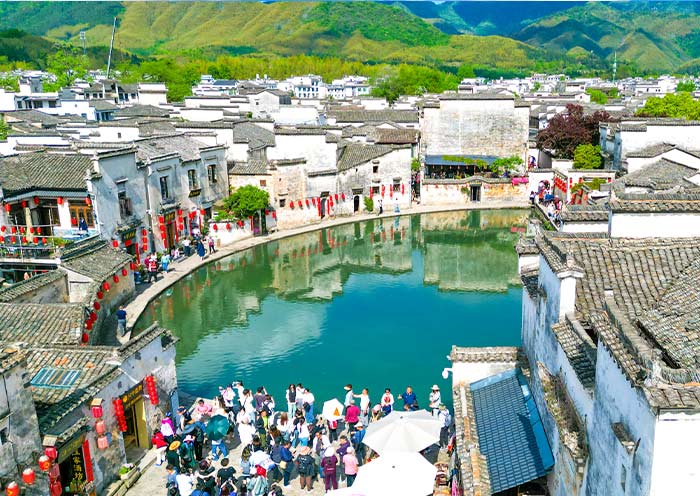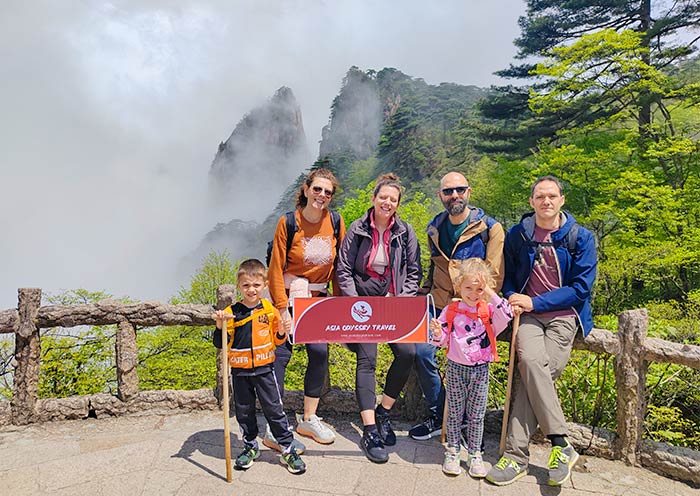We went to China for a two week train visit of four places - Shanghai, Huangshan, Xian and Beijing. Amazing !!! The tour was coordinated by Asia Odyssey Travel. Our tours were coordinated remotely by our very proficient and helpful agent, Nicole. She arranged our hotels, train tickets to travel between locations, and a guide with driver in each location. The connection with a local guide made our holiday experience both informative and much more personal. Nicole was responsive to our questions and concerns. She facilitated the purchase of train tickets and booking of hotels which would have been very difficult on our own (we don’t speak Mandarin, and it is hard to arrange financial transactions in China without WeChat Pay or Alipay). We were joined up with different travellers in each location - and enjoyed sharing our experience with them. Thank you very much Nicole (tour coordinator), and all of our guides (Maria, Lacie, Lee and Mark) for making our China visit an exceptional one. John and Larissa
- Highlights
- Itinerary
- Price
- Trip Notes
- Accommodation
- Photos
- Reviews
Call on World Heritage Site Collectors!
Huangshan is famous for Yellow Mountain and offers breathtaking landscapes that seem like scenes from poetry. The mesmerizing vistas of the Yellow Mountain have earned it the status of a World Heritage Site, attracting travelers from all over the world to marvel at its natural wonders. But that's not all! Nestled amidst the lush mountains and clear waters are the ancient villages of southern Anhui, waiting to be explored and admired for their hidden charms. Two such villages, Hongcun and Xidi, were jointly inscribed as UNESCO World Heritage Sites in 2000 under the category of "Ancient Villages in Southern Anhui."
Our 4-Day Huangshan Heritage Tour is designed for travelers who want to gain a deeper understanding of the nature, culture, traditions, and way of life of a place. Here's your golden ticket to not just one, but three UNESCO World Heritage Sites in one captivating journey. If you're an avid heritage collector, Here, among the Majestic Peaks and the Timeless Villages, the dual wonders of nature's grandeur and mankind's cultural zenith beckon.
Natural heritage: As one of China's Five Sacred Mountains, the grandeur of Yellow Mountain cannot be overstated. Its towering granite peaks, intertwined with ancient pine trees, paint a picture of nature's beauty at its finest. Each season presents a different facet of its beauty, from the serene white of winter snow to the mystical sea of clouds that lends the mountain range its dreamlike quality. Visitors are not just seeing a mountain, but experiencing a symphony of natural phenomena that have inspired poets, artists, and sages for centuries.
Cultural heritage: Journeying to Hongcun and Xidi is like stepping back in time. These villages are living museums of Ming and Qing Residential Houses. The Hui-style architecture, characterized by white-washed walls, dark tiled roofs, intricate wood carvings, and ornate detailing, showcases architectural ingenuity and aesthetic sense. The village layouts, especially Hongcun's ox-like plan, exemplify feng shui principles and water management, offering a glimpse into the brilliant town planning of ancient China. The customs, traditions, and way of life in these villages have been preserved for centuries, offering insights into the authentic Huizhou culture.
The essence of travel is not just the destination, but also the scenic views and cultural experiences along the way. This four-day Huangshan Cultural Heritage Tour will take you into an ancient yet vibrant world, allowing you to deeply connect with nature and millennia of human history.



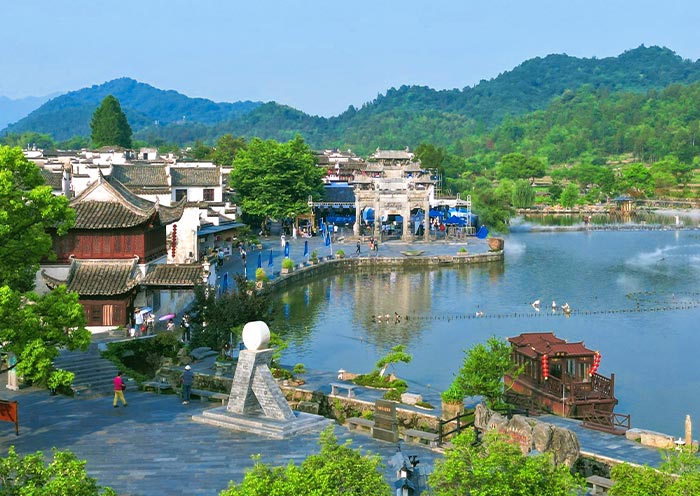

Itinerary at a Glance
Huangshan (4 Days)
Yellow Mountain ( Back Mountain, West Sea Grand Canyon, Sunset & Sunrise), Hongcun Village, Xidi Village, Tunxi Ancient Street, Hu Kaiwen Ink-stick Factory
Itinerary Day by Day
Welcome to Huangshan, a city well known for the Yellow Mountain! Upon your arrival in Huangshan, the local guide and driver will greet you at the exit of the train station, and then escort you to your hotel in Huangshan city. Enjoy some free time on your own after the hotel check-in.
Arrival Ideas:
By Air: Huangshan Tunxi International Airport has domestic flights from major cities such as Beijing, Guanzhou, Shanghai, Shenzhen, Guilin, Chongqing, Chengdu and Xi'an, etc.
By Train: High speed trains are available from Shanghai (2.5~3.5hrs), Hangzhou (1.5~2hrs), Suzhou (2~3.5hrs),Beijing (5.5~7hrs), and Guangzhou (7hrs), etc.




Route: Yungu Cable Way - Begin-to-believe Peak - Dispelling Cloud Pavilion -West Sea Grand Canyon - Bright Summit - Flying-over Rock
Walking Distance: about 7~9km/5~6 hrs
After breakfast, your guide and driver will pick you up from your hotel lobby and drive about 80 kilometers (approximately 1.5 hours) to the foot of Mount Huangshan (Yellow Mountain), a UNESCO World Heritage Site and one of the Five Sacred Mountains. Yellow Mountain is famous for its stunning natural scenery, which includes ancient pine trees, oddly-shaped granite peaks, winter snow, hot springs, and a sea of clouds that often envelops the mountain range, also known as the "Five Natural Wonders". Huangshan has been a subject of inspiration in Chinese art, literature, and traditional landscape paintings for centuries. More than 400 years ago, during the Ming Dynasty, Xu Xiake, a renowned geographer and traveler, visited Huangshan Mountain twice and uttered the famous phrase, "After visiting the Five Sacred Mountains, one does not need to see any other mountains; after visiting Huangshan, one does not need to see the Five Sacred Mountains." This illustrates the status and importance of Huangshan Mountain among the famous mountains in China.
To maximize your time and energy and experience the mountain's most mesmerizing sceneries on the top, a sightseeing bus will transfer you directly from the foot of the back mountain to Yungu Temple. From here, you'll board the cableway to White Goose Ridge Station (8 mins). As you ascend, give you breathtaking aerial views of the forests below—a canvas of endless green, , with granite peaks and twisted pines veiled in mist. Upon arrival, you'll notice the air is cooler and crisper. Now begins your trek to the poetic Begin-to-Believe Peak. Huangshan is famous for its ancient and oddly shaped pine trees. En route, you'll admire several like Black Tiger Pine, and Harp Pine, each with its unique shape and character. When you reach Begin-to-Believe Peak, you'll understand how it got its name. The stunning vistas, which include a mixture of cliffs, valleys, and uniquely shaped rocks, will make you begin to believe in the mystical aura that Huangshan is famous for. After soaking in the views at Begin-to-Believe Peak, you will trek for about 40 minutes to your mountaintop hotel for a break.
After lunch, it’s time for the grandeur of the West Sea Grand Canyon. Walking into the Xihai Grand Canyon is like stepping into a Chinese ink painting, with numerous peculiar rocks and towering stones standing before your eyes. The scenery is magnificent, and the Huangshan pine growing on the rocks takes on myriad poses and postures. The hike can be tailored to your energy level and time constraints; a 2-hour round-trip will get you to the 1st ring, while a 2.5-hour expedition will take you to the 2nd ring. (Please note: The thrilling and rugged trails make this activity challenging and physically demanding. Also, the West Sea Grand Canyon is usually closed during cold weather and heavy snow.)
After, you have a couple of choices for watching the sunset: Cloud-Dispelling Pavilion or the higher-altitude Bright Summit. From Cloud-Dispelling Pavilion, it takes about 30 minutes to get back to the hotel. The Cloud-dispersing Pavilion is called so because the cloud will disperse upon reaching here. It is a good place to admire the sunset, cloud sea, strange peaks and deep valley. If time and energy allow, consider extending a hour trek to the Sky Sea Scenic Area to see Flying-over Rock. This massive rock, estimated to weigh around 360 tons and standing approximately 12 meters high, appears to balance precariously on a narrow base atop another boulder. Enjoy the sunset from the second highest peak - Bright Summit (1840m). After the sunset, it's a 40-minute trek back to your hotel.
Good to know:
1.Travel light! There is a lot of walking involved on the mountain, so it's recommended to carry only essential items and pack light. Alternatively, you can store your luggage at the mountain's base.
2. For environmental protection, some hotels on the mountain do not provide disposable toiletries, so it's advisable to bring your own.
3. Staying on the mountain allows you more time to appreciate additional scenic views of Huangshan, especially sunrise and sea of clouds. However, due to the high transportation costs on the mountain, hotel facilities may be limited. The star-rated hotels might not be up to the standard of those in big cities like Shanghai. Due to the moist weather on the mountains, the rooms could be a little humid. Despite the lack of choice, we will select a relatively comfortable hotel for you.

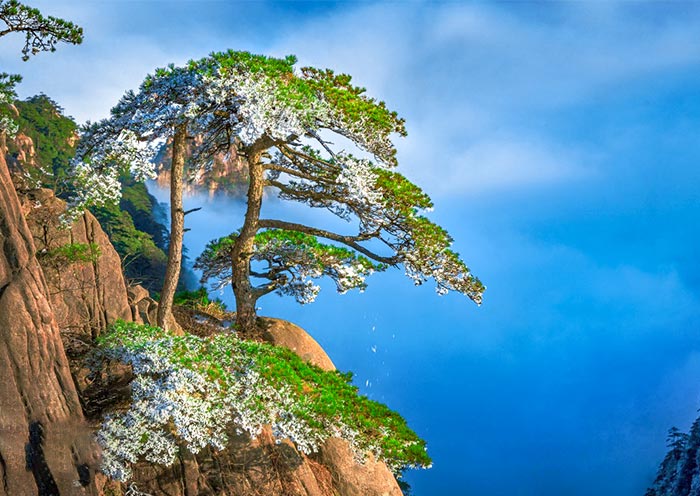


Route: Sunrise - Dawn Pavilion - Refreshing Terrace - Monkey Gazing at the Sea - Lion Peak - Yungu Cable Way
Walking Distance: about 3km/2 hrs
Today begins in the dark, pre-dawn hours (usually around 5 am to 6 am), as you'll want to catch the awe-inspiring sunrise that Mount Huangshan is celebrated for. Make sure you're dressed warmly and adequately - mountain temperatures can be surprisingly chilly in the morning. As the sky gradually lightens, you'll witness one of nature's most glorious spectacles: the sun rising over the fabled peaks and valleys of Mount Huangshan. With hues of orange, pink, and gold illuminating the sky, it's a moment so sublime that it has been the muse of countless poets and painters for centuries. After the sunrise, get back to your hotel for breakfast.
Then proceed to Lion Peak (1690m) to see the Dawn Pavilion, Refreshing Terrace, Stone Monkey Watching the Sea, and various shapes of pines and rocks along the route. Lion Peak, as its name implies, really looks like a crouching lion. "Monkey Gazing at the Sea" is an evocative rock formation that resembles a monkey contemplating the ocean of clouds below. It's a visual treat that also offers the perfect photo opportunity. Afterward, walk to the White Goose Ridge Cable Station to take the Yungu cableway down the mountain. Your driver is ready at the mountain foot to transfer you back to Huangshan City for lunch.
After lunch, take a relaxing stroll on the 900-year-old Tunxi Ancient Street. Tunxi Old Street is paved with maroon flagstones, over 1,000 meters long, consisting of a main street, three cross streets and 18 alleys. The buildings along the street have a distinctive local style known as Huizhou style, featuring white walls and black tiles, elaborate carvings. As you wander, you'll discover that many shops have been family-owned for over a century, offering a curious array of wares from inkstones and brushes to local teas and Mao badges. Don't miss the chance to savor local gastronomic delights like Mao Tofu (毛豆腐), Shaobing (烧饼), and the pungent Smelly Mandarin Fish (臭鳜鱼).
Located on the old street, the Tunxi Museum is a treasure trove that offers profound insights into the rich tapestry of Anhui's history. Here, you can marvel at a collection that spans Ming and Qing Dynasty furniture, delicate porcelain, and intricate Huizhou carvings. Special emphasis is given to the "Four Treasures of the Study" - the brush, ink, paper, and inkstone that are cornerstones of Chinese calligraphy and painting. Due to the long history and exceptional quality of these "Four Treasures" in Anhui, many scholars and artists prefer using them. These high-quality tools enjoy a great reputation not only in China but also internationally.
Your cultural exploration doesn't end here. Within a short distance, the Hu Kaiwen Ink-stick Factory is one of the oldest and most prestigious inkstick producers in China, renowned for producing high-quality inksticks. Huizhou Inksticks (徽墨) have long been considered the highest grade among all kinds of inksticks. In fact, the ingredients of inksticks remain a mystery, known only to a few remaining manufacturers of this traditional craft. Here, you can witness the process of making inksticks, which still preserves the essence of traditional craftsmanship with a hand-operated soot collection (点烟). Moreover, the factory boasts an extraordinary collection of 7,800 precious inkstick molds created by famous artists from various dynasties since the Ming and Qing dynasties. If you're interested in Chinese art, culture, or the tools used in traditional Chinese calligraphy and painting, it can be a unique and enlightening experience. Stay overnight at a hotel in Huangshan city.

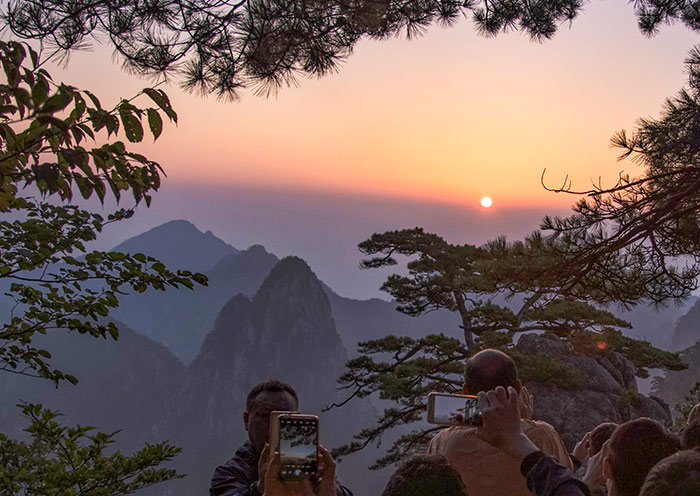


After breakfast, you be picked you up at your hotel at your hotel by guide and prepare to embark on a journey through time. Today, accompanied by your knowledgeable guide, you'll meander through two of China's most iconic ancient villages: Hongcun and Xidi, capturing the very essence of ancient Huizhou culture. These villages are the best examples of ancient Hui-style architecture and were inscribed as UNESCO World Heritage Sites in 2000 as part of the "Ancient Villages in Southern Anhui" World Heritage Site.
There are many ancient villages in China, while the ancient villages in southern Anhui have their own unique tradition. The ancient villages in southern Anhui are predominantly designed in the Huizhou architectural style, a school of design that showcases intricate wood carvings, walls of pristine white, and roofs of contrasting black tiles. The “Horsehead” walls, named for their shape, are another characteristic feature. These architectural elements come together to create scenes that seem plucked right from a traditional Chinese ink painting- serene, timeless, and profoundly beautiful. Huizhou villages often have a rich history tied to the Huizhou merchants, one of the three major commercial groups in ancient China, especially successful during the Ming and Qing Dynasties. Upon amassing wealth, they often returned to their hometowns to build luxurious mansions, ancestral halls, and archways, contributing to the family-residing village's architectural and cultural richness.
Hongcun Village - A Village in a Chinese Painting
Today, you will first visit Hongcun Village. It is renowned for its well-preserved ancient architecture and layout from the Ming and Qing Dynasties. Often described as a "village in a Chinese painting," Hongcun has become a magnet for photographers and artists, eager to capture its idyllic scenery and architectural grace.
Established in the Song Dynasty, Hongcun Village is over 900 years old. The lay of the Hongcun was remodeled according to geomantic (feng shui) ideas. It is common to see Hui-style villages often situated near mountains and water sources, aligning with the people Huizhou’s belief that harmony with the natural environment promotes the well-being and prosperity of the villagers. In the embrace of southern Anhui's rolling hills, Hongcun unfolds like a living ox-shaped tapestry. Leigang Hill forms its majestic “head,” crowned by two ancient trees as “horns.” The Moon Pond forms its “heart”, and South Lake is the “belly.” Four timeworn bridges stand as the ox's “feet,” t, straddling the tranquil Jiyin stream, while a meandering canal - the village's “intestines” - adds a flowing cadence to daily life. All these elements converge at the serene South Lake, a natural mirror that not only reflects the village's ethereal beauty but also anchors its feng shui harmony.
Step inside and you are led through labyrinthine cobblestone streets, meandering like poetic verses. These lanes, narrow yet inviting, seem to whisper the stories of generations past as they guide you through the village's “body,” a collection of white-walled, black-tiled Hui-style buildings. Here, 103 ancient buildings from the Ming and Qing dynasties, and 34 buildings from the Republican era are preserved. The villagers uphold time-honored traditions and customs, living a pastoral life that feels as if suspended in another era. The most beautiful sites are the expansive South Lake and the crescent-shaped Moon Pond. These tranquil bodies of water act as natural mirrors, capturing the timeless beauty of ancient bridges and classic Huizhou architecture as if they were scenes on a painted scroll. It is especially beautiful during the season when lotus flowers are in full bloom.
The ancient inhabitants of this village have left a rich legacy of material and spiritual wealth. On the north bank of Southern Lake, you will find South Lake Academy, a private ancient school that served the village, and was a good architectural representative of the family academies of Huizhou. Scattered throughout the village are several mansions, courtyards, and ancestral halls, such as Chengzhi Hall, Wang Ancestral Hall, Jingxiu Hall, Jingde Hall, and Lexu Hall. Among these, the Wang Ancestral Hall stands as the largest and most well-preserved family shrine in the village. A portrait of the Wang family's grand matriarch hangs on the left wall inside the hall - Hu Zhong who designed and led the construction of Hongcun's water management system, shaping the village into what it is today. Chengzhi Hall, founded by a salt merchant, is the largest private residence in Hongcun and is often referred to as the "Folk Forbidden City." The mansion is renowned for its intricate Huizhou "Three Carvings," which include brick carvings, wood carvings, and stone carvings. Among these, the wood carvings are particularly exceptional. Some are even gilded, exuding magnificence and opulence that testify to the wealth and prestige of its original owners.
Xidi Village - A Tapestry of History and Ancient Architecture
Next, your journey will take you to Xidi Village, which is located near Hongcun. However, Xidi offers a less crowded, more tranquil, and decidedly authentic experience compared to Hongcun. With its rich 970-year history, Xidi is an even older village. Boasting over 300 ancient residences, three ancestral halls, and a strikingly ornate archway, the village is rightly celebrated as a "Living Museum of Ming and Qing Residential Houses." For enthusiasts of Chinese architecture and history, particularly that of the Huizhou region, Xidi is an unmissable stop on your itinerary.
The ascent of the village was closely intertwined with the fortunes of the Hu family. Founded in AD 1047, Xidi has served as a stronghold for the Hu clan for several centuries. This family traces its lineage back to the eldest son of the last Tang Emperor, who sought refuge here during the waning years of the Tang Dynasty. A grandiose three-tiered Ming Dynasty decorative arch, known as the Hu Wenguang Memorial Archway (胡文光牌楼), stands at the entrance of the village as an ostentatious testament to Xidi's historical significance. The Da Fu Grand House (大夫第), located on the main street of Xidi Village, is an old residence of the Hu family.
For nearly a millennium, Xidi has been the birthplace of numerous influential merchants, scholars, and politicians. In Xidi, you have the opportunity to explore a rich tapestry of architectural and cultural sites. These aren't just limited to the grand mansions erected by wealthy merchants. The village is also replete with private academies, modest residences, gardens, and ancestral halls, built by officials and scholars of yesteryears. For example, Ling Yun Pavilion (凌云阁) was the study room of Hu Shihui, a scholar during the Qing Dynasty. Xu Guo Stone Archway (许国石坊) honors Xu Guo, a minister during the Ming Dynasty. Each building has its own unique characteristics and historical narratives, for instance, carved lions often appear in the homes of officials, symbolizing authority, while peonies, representing wealth, are more commonly found in the homes of merchants.
The layout of Xidi village is also built according to the ancient Chinese practice of Feng Shui. The village takes the shape of a boat, with mountains surrounding it on all four sides. Two streams run through the northern and eastern parts of the village, converging at Huiyuan Bridge in the south. The primary backbone of the village consists of one longitudinal street and two streams, forming a road system that mainly extends to the east and stretches out to the north and south.
As you wander through the cobblestone lanes, numerous architectural gems beckon for closer inspection. Diji Hall (迪吉堂) and Zhuimu Hall (追慕堂) on Dalu Street (大路街) are both masterpieces that showcase the intricate craftsmanship of the region. Jing’ai Hall (敬爱堂) stands as the largest edifice in town, a multipurpose hall steeped in history; it was a venue for weddings, clan meetings, and even dispensing community justice, though it's worth noting that historically, women were not permitted entry. For those interested in more delicate artistry, Xiyuan (西园) is a small residence that boasts dual-sided, exquisite stone carvings on its windows. Notably, many of these ancient buildings still serve as homes, offering visitors a living glimpse into this enduring culture. Strolling through Xidi feels like stepping back in time, where every architectural element and every carving has a tale to tell. The village stands as a living testament to the mastery and sophistication of ancient Chinese architecture and culture. You can not help but marvel at the ingenuity and artistry of the craftsmen and builders of yesteryears.
As the day comes to an end and we accompany you to the train station or airport, we hope that the memories of these ancient villages and Yellow Mountain will stay with you, like the soft melodies of an old song, resonating in your mind on the journey back.
Thank you for choosing Asia Odyssey Travel for your China tour, and we are always here working for you and hope to see you again for your next trip to China/Asia. Safe journey!




Price: What’s Included & What’s Excluded
What’s Included?
What’s Excluded?
Important Trip Notes for Booking a Private China Tour
Accommodation & Hotel Condition for Your China Tour
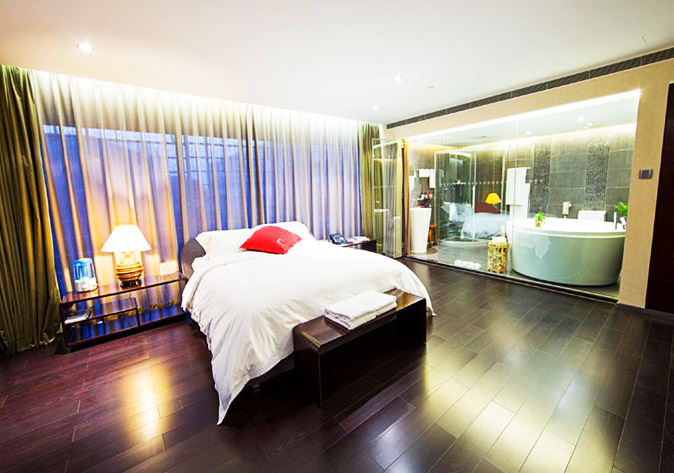



Photo Gallery for This Itinerary
Latest Huangshan Tours Reviews from Our Customers

Mattwich Larissa
Canada
Destination(s): Beijing, Xian, Shanghai, Huangshan
Date of Experience: Oct 30, 2023
Tour Customized by: Nicole
You May be Interested in This Tour: Customized Tour

WEE SWEE LIAN CAROL
Singapore
Thank you Asia Odyssey Travel for our wonderful month long holiday!
Special thanks to our travel consultant, Rex, for the well planned itinerary that covered Shanghai, Suzhou, Hangzhou, Huanshan, Xian, Huashan, Tibet and Zhangjiajie for our party of five. It was very well paced, fun-filled, packed with interesting activities and was reasonably priced too!
Travel between different places were well coordinated and seamless. We never had a moment where we had to worry at all.
All the tour guides were knowledgeable, accommodating and professional. Well done!!
A special mention goes to Rex, our travel consultant and Abbie, our Zhangjiajie tour guide for handling an emergency well.
My husband felt unwell on the day of arrival at the Zhangjiajie Airport. He was immediately driven to a hospital A&E and the rest were driven to the hotel to rest.
At the hospital, Abbie ensured smooth registration and accompanied my husband and me during the doctor's consultation and the entire 8 hours treatment until my husband was discharged at night. Abbie was very patient and comforting throughout.
Rex, who was in another province, also followed up closely by calling us personally to keep in touch with the situation. We knew we were in good hands definitely! Our itinerary was also unaffected due to the hospital stay, as Rex and Abbie were quick to make adjustments to fit our travel plans nicely into the next two days' schedule. Our overall holiday was made very memorable and wonderful, thanks to Asia Odyssey Travel for their excellent service and planning.
Best Regards,
Carol Wee
Destination(s): Xian, Shanghai, Tibet, Zhangjiajie, Huangshan, Suzhou, Hangzhou, Henan
Date of Experience: Oct 07, 2024
Tour Customized by: Rex
You May be Interested in This Tour: Customized Tour

Teoh Lee Peng
Singapore
Runny was our travel consultant for a group of 10 people. Runny was professional and very prompt in answering our queries and concerns about the trip. The tour guides provided could speak English which is a plus point for us. The hotels provided were great as the rooms were big and clean. Food was great as we tried the local food and the portions were very generous. One point to note for improvement was that the train ride from Dunhuang to Turpan was at 5pm and hence we arrived very late in Turpan. Flying into Kashgar was also quite late and we were all very tired. However, inspite of this, everyone said that they really enjoyed the trip very much. The sights, food and accommodation were great, so thanks to Runny for a well organised trip. A friend had asked about our trip and I recommended Runny to him.
Destination(s): Huangshan, Xinjiang, Dunhuang/Gansu
Date of Experience: Aug 28, 2024
Tour Customized by: Runny
You May be Interested in This Tour: Customized Tour
Price: Request
(Based on a private tour for two people. Price varies depending on program, travel date, number of people.)
Free Enquiry! You don’t need to pay for the reservation.
- United States (+1)
- Australia (+61)
- Singapore (+65)
- Malaysia (+60)
- Philippines (+63)
- Canada (+1)
- Italy (+39)
- Indonesia (+62)
- United Kingdom (+44)
- Spain (+34)
- Mexico (+52)
- Hong Kong (+852)
- Thailand (+66)
- United Arab Emirates (+971)
- New Zealand (+64)
- South Africa (+27)
- Germany (+49)
- Brazil (+55)
- India (+91)
- France (+33)
- Vietnam (+84)
- The Netherlands (+31)
- Saudi Arabia (+966)
- Ireland (+353)
- Argentina (+54)
- Switzerland (+41)
- Romania (+40)
- Pakistan (+92)
- Japan (+81)
- Portugal (+351)
- Bangladesh (+880)
- South Korea (+82)
- Puerto Rico (+1)
- Türkiye (+90)
- China (+86)
- Belgium (+32)
- Qatar (+974)
- Greece (+30)
- Taiwan (+886)
- Austria (+43)
- Poland (+48)
- Israel (+972)
- Chile (+56)
- Sri Lanka (+94)
- Nigeria (+234)
- Peru (+51)
- Colombia (+57)
- Hungary (+36)
- Nepal (+977)
- Denmark (+45)
- Bulgaria (+359)
- Norway (+47)
- Slovenia (+383)
- Sweden (+46)
- Kuwait (+965)
- Costa Rica (+506)
- Ecuador (+593)
- Venezuela (+58)
- Malta (+356)
- Croatia (+385)
- Tunisia (+216)
- Czechia (+420)
- Mongolia (+976)
- Bahrain (+973)
- Mauritius (+230)
- Papua New Guinea (+675)
- Cambodia (+855)
- Dominican Republic (+1)
- Luxembourg (+352)
- Finland (+358)
- Guatemala (+502)
- Myanmar (+95)
- Maldives (+960)
- Slovakia (+421)
- Laos (+856)
- Serbia (+381)
- Brunei (+673)
- Oman (+968)
- Macao (+853)
- Panama (+507)
- Morocco (+212)
- Jordan (+962)
- Georgia (+995)
- Fiji (+679)
- Bolivia (+591)
- Lithuania (+370)
- Bahamas (+1)
- Cyprus (+357)
- Latvia (+371)
- Bhutan (+975)
- Iraq (+964)
- Iran (+98)
- Kenya (+254)
- Jamaica (+1)
- Zimbabwe (+263)
- Azerbaijan (+994)
- Uruguay (+598)
- Estonia (+372)
- Andorra (+376)
- Cameroon (+237)
- Ghana (+233)
- Kazakhstan (+7)
- Nicaragua (+505)
- Egypt (+20)
- Russia (+7)
- Albania (+355)
- Réunion (+262)
- Montenegro (+382)
- Algeria (+213)
- Afghanistan (+93)
- Martinique (+596)
- Uganda (+256)
- Honduras (+504)
- North Macedonia (+389)
- Trinidad and Tobago (+1)
- Suriname (+597)
- Antigua and Barbuda (+1)
- Zambia (+260)
- Ukraine (+380)
- Armenia (+374)
- Barbados (+1)
- Belarus (+375)
- Palestine (+970)
- Lesotho (+266)
- Moldova (+373)
- Ethiopia (+251)
- French Polynesia (+689)
- Gambia (+220)
- Guam (+1)
- Gibraltar (+350)
- Isle of Man (+44)
- New Caledonia (+687)
- El Salvador (+503)
- Comoros (+269)
- Seychelles (+248)
- Chad (+235)
- Samoa (+685)
- Cook Islands (+682)
- Palau (+680)
- Paraguay (+595)
- DR Congo (+243)
- Solomon Islands (+677)

